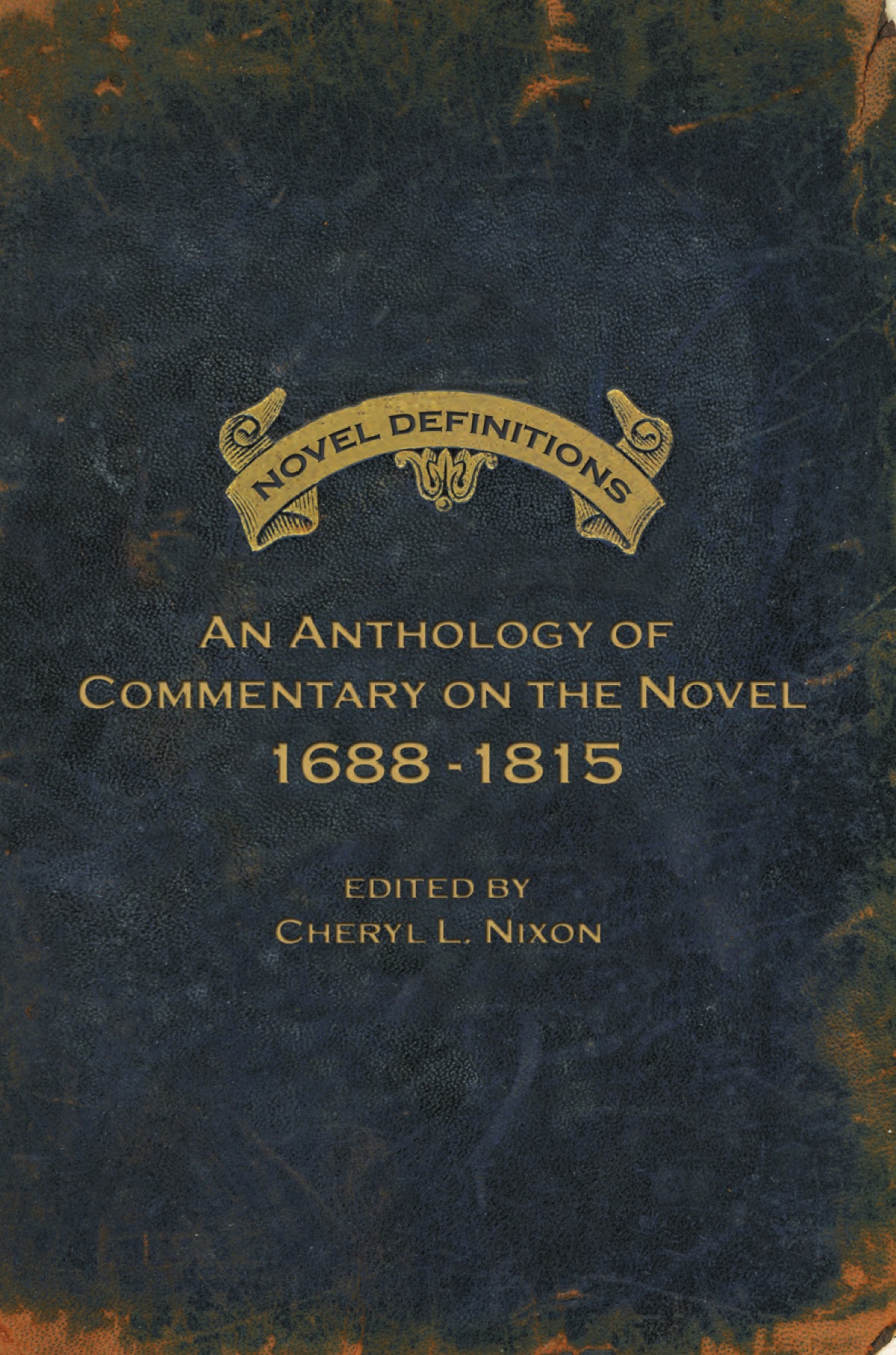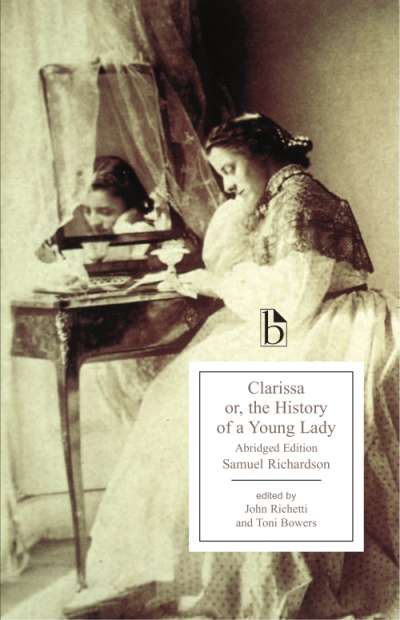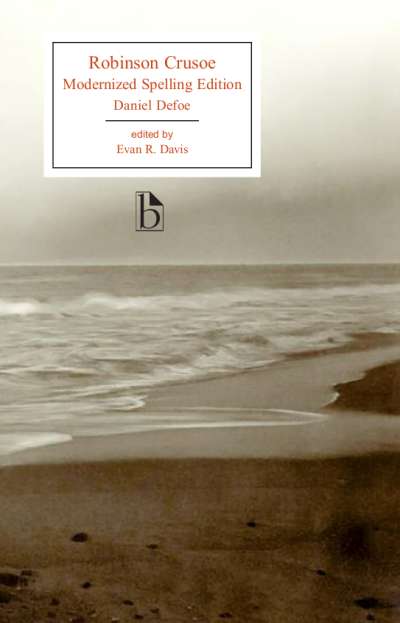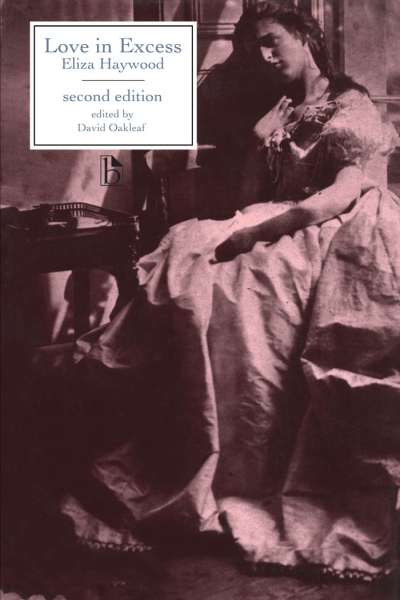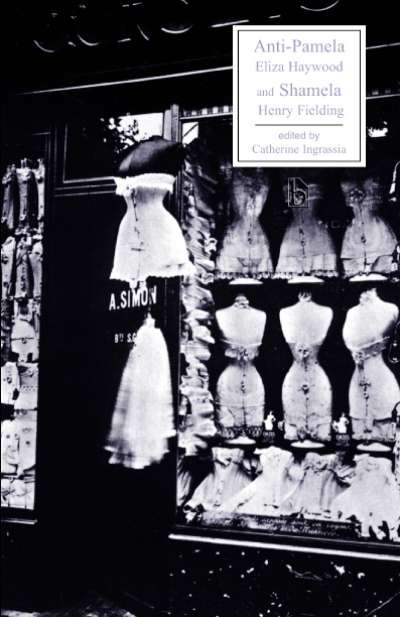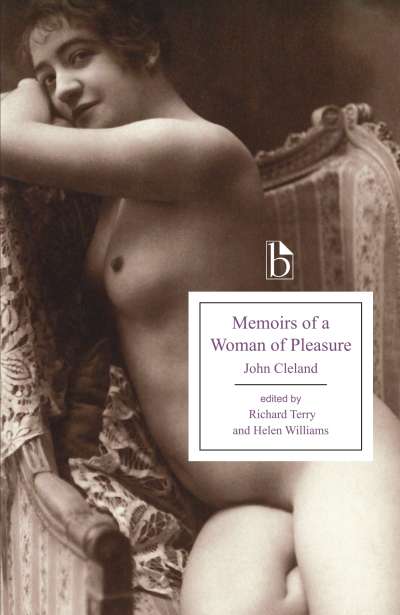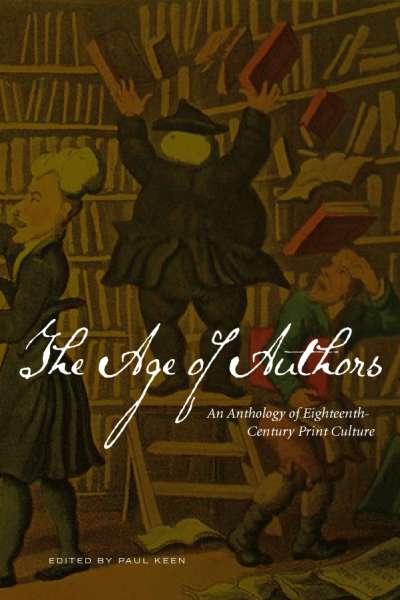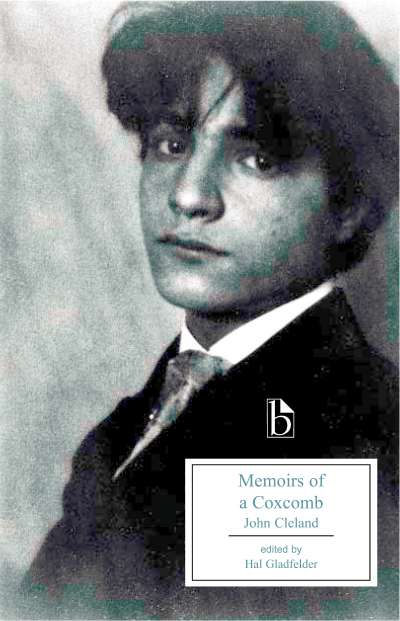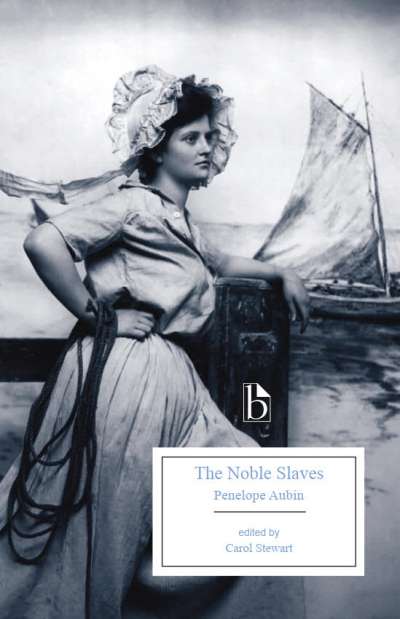Novel Definitions captures the lively critical debate surrounding the invention of the English novel, showing how the rise of the novel was accompanied by a rise in popular literary criticism. The anthology collects over 135 primary sources that chart the long eighteenth century’s interpretation of the novel. These sources—many newly-discovered—include essays, prefaces, reviews, and sermons written by authors ranging from Aphra Behn to Walter Scott. Novel Definitions brings together authors’ prefatory analyses of their work; essayists’ debates concerning the novel’s formal qualities; commentators’ questions concerning the novel’s cultural position, including whether or not women and children should read novels; reviewers’ definitions of the qualities that make a novel successful; and literary historians’ first attempts to write the history of the novel.
Comments
“[Novel Definitions] is essential reading in both the culture and theory of novel writing and reading during the eighteenth century. Our courses on the eighteenth-century novel and our writing about the novel will be much the better for its appearance.” — Jonathan Kramnick, Studies in English Literature
“Cheryl Nixon’s Novel Definitions is an extremely useful, comprehensive, and very well-organized anthology of responses, both professional and popular, to the English novel in the period of its cultural ascendency. Both in its range—which covers major statements about the developing genre from Huet and Behn through Reeve and Barbauld—and in its depth—which places well-known texts by writers such as Richardson and Johnson alongside a wealth of less familiar criticism and commentary—Novel Definitions offers an indispensible resource for teaching and researching the history of the novel in eighteenth-century Britain.” — Scott Black, University of Utah
“In this superb anthology, both learned and lively, Cheryl Nixon provides a thoughtful and theoretically informed introduction to the critical commentaries that shaped the debate over the meaning of the “new” novel. Authors and critics became cultural commentators, members of a cultural community all too aware of what was at stake in their new form…This collection is invaluable for a study of the novel and of eighteenth-century British culture.” — Carol Flynn, Tufts University
“Cheryl Nixon’s invaluable Novel Definitions gathers vast and rich commentary that expands our understanding of eighteenth-century novels. With a superb introduction, Novel Definitions is intelligently designed and thoughtfully organized, schematizing its numerous materials into formal and thematic categories that foreground the experimental and provocative nature of the genre in its earliest incarnations. Students of the eighteenth-century novel will want to read all these prefaces, critical essays, commentaries and book reviews, for they illuminate the important controversies and vexing debates that preoccupied the eighteenth-century reading public. Novel Definitions is an outstanding edition of rarely-collected material that should be required reading.” — Tita Chico, University of Maryland
Acknowledgements
Introduction
A Note on the Text
Part I: Prefatory Writing
A. The Novel’s Relationship to Fact, Fiction, and Truth
- Aphra Behn, Dedication and Opening of Oroonoko (1688)
- Daniel Defoe, Preface to Robinson Crusoe (1719)
- Daniel Defoe, Preface to The Farther Adventures of Robinson Crusoe (1719)
- Penelope Aubin, Preface to The Strange Adventures of the Count de Vinevil and his Family (1721)
- Samuel Richardson, Preface to Pamela (1740)
- Eliza Haywood, Preface to The Fortunate Foundlings (1744)
- John Cleland, Opening of Memoirs of a Woman of Pleasure (1748-49)
- Charles Johnstone, Preface to Chrysal (1760-65)
- Elizabeth Griffith, Preface to The Delicate Distress (1769)
- Thomas Thoughtless [pseudonym], Advertisement to The Fugitive of Folly (1793)
B. The Novel’s Definition as a Romance, History, Biography, or Other Form
- William Congreve, Preface to Incognita (1692)
- Jane Barker, Preface to Exilius (1715)
- Mary Davys, Preface to The Works of Mrs. Davys (1725)
- Henry Fielding, Preface to Joseph Andrews (1742)
- Sarah Fielding, Advertisement to The Adventures of David Simple (1744)
- Henry Fielding, Preface to Sarah Fielding, The Adventures of David Simple, 2nd ed. (1744)
- Tobias Smollett, Preface to The Adventures of Roderick Random (1748)
- Henry Fielding, from Book 9, Chapter 1 of Tom Jones (1749)
- Thomas Holcroft, Preface to Alwyn (1780)
- [Maria Edgeworth and Richard Lovell Edgeworth], Preface to Maria Edgeworth, Castle Rackrent (1800)
- Sarah Green, Preface to Romance Readers and Romance Writers (1810)
C. The Novel’s Structuring of Plot, Character, Style, and Morality
- Delariviere Manley, Preface to The Secret History, of Queen Zarah, and the Zarazians (1705)
- Daniel Defoe, Preface to Moll Flanders (1722)
- Anonymous [attributed to Samuel Richardson], Preface to Penelope Aubin, A Collection of Entertaining Histories and Novels (1739)
- Samuel Richardson, Preface to Clarissa (1747-48)
- Henry Fielding, from Book 8, Chapter 1 of Tom Jones (1749)
- Tobias Smollett, Dedication to The Adventures of Ferdinand Count Fathom (1753)
- Jane Collier and Sarah Fielding, Introduction to The Cry (1754)
- Sarah Scott, Preface to The History of Sir George Ellison (1766)
- Richard Cumberland, from Book 3, Chapter 1 of Henry (1795)
- Mary Hays, Preface to Memoirs of Emma Courtney (1796)
D. The Novel’s Definition as a Gothic, Eastern, Sentimental, Political, or Historical Tale
- Horace Walpole, Prefaces to The Castle of Otranto (1764, 1765)
- James Yeo, Preface to Omar and Zemira (1782)
- Clara Reeve, Preface to The School for Widows (1791)
- Charlotte Smith, Preface to Desmond (1792)
- Walter Scott, “Introductory” to Waverley (1814)
Part II: Critical Essays
A. The Novel’s Relation to Fact, Fiction, and the Real
- John Dunton, ed., Athenian Mercury, Vol. 9, No. 2 (1692)
- Joseph Addison, The Spectator, No. 416 (1712)
- Charles Gildon, “A Dialogue betwixt D— F–e, Robinson Crusoe, and his Man Friday” and “An Epistle to D— D’F–e, the Reputed Author of Robinson Crusoe,” The Life and Strange Surprising Adventures of Mr. D—DeF– (1719)
- Samuel Johnson, The Rambler, No. 4 (1750)
- John Hawkesworth, The Adventurer, No. 4 (1752)
- William Whitehead, The World, No. 19 (1753)
- Anna Letitia [Aikin] Barbauld and John Aikin, “On the Pleasure derived from Objects of Terror […]” and “An Enquiry into those Kinds of Distress which excite agreeable Sensations […],” Miscellaneous Pieces, in Prose (1773)
- George Wright, “Modern Novel-Writers Justly Censur’d,” Pleasing Reflections on Life and Manners (1787)
- William Hazlitt, “Standard Novels,” Edinburgh Review, Vol. 24 (1815)
B. The Novel’s Definition as a Romance, History, Biography, or Other Form
- John Dennis, from Essay on the Genius and Writings of Shakespear (1712)
- Peter Shaw, “Of Writings designed to improve Morality,” The Reflector (1750)
- Samuel Johnson, from A Dictionary of the English Language (1755)
- Richard Hurd, from A Dissertation on the Idea of Universal Poetry (1766)
- Anna Letitia [Aikin] Barbauld and John Aikin, “On Romances, An Imitation” and “On the Province of Comedy,” Miscellaneous Pieces, in Prose (1773)
- Philip Dormer Stanhope, 4th Earl of Chesterfield, from Letters written by … the Earl of Chesterfield to His Son (1774)
- Henry Mackenzie, The Lounger, No. 28 (1785)
- George Canning, The Microcosm, No. 26 (1787)
- Robert Alves, “A Parallel between History and Novel writing,” Sketches of a History of Literature (1794)
C. The Novel’s Structuring of Plot, Character, Style, and Morality
- Aaron Hill, “[Letter] To the Editor of Pamela,” Samuel Richardson, Pamela, 2nd ed. (1741)
- Sarah Fielding, from Remarks on Clarissa, Addressed to the Author (1749)
- Samuel Johnson, The Rambler, No. 139 (1751)
- Anonymous, from An Essay on the New Species of Writing founded by Mr. Fielding (1751)
- Edward Young, from Conjectures on Original Composition (1759)
- Arthur Murphy, Introduction to The Works of Henry Fielding (1762)
- James Burnett, Lord Monboddo, from Vol. 3 of Of the Origin and Progress of Language (1776)
- William Craig, The Mirror, No. 31 (1779)
- Richard Cumberland, “Remarks upon novels, and particularly of Richardson’s
Clarissa,” Vol. 2 of The Observer (1786)
- Humphry Repton, “On the Clarissa of Richardson and Fielding’s Tom Jones,” Variety (1787)
Part III: Cultural Commentary
A. The Novel’s Expanding Popularity
- Philip Skelton, from The Candid Reader (1744)
- John Hawkesworth, The Adventurer, No. 35 (1753)
- Edward Moore, The World, No. 13 (1753)
- George Colman (the Elder) and Bonnell Thornton, The Connoisseur, No. 96 (1755)
- Oliver Goldsmith, “A Resverie,” The Bee, No. 5 (1759)
- George Colman (the Elder), Prologue to Polly Honeycombe, A Dramatic Novel of One Act (1760)
- Vicesimus Knox, “On the Multiplication of Books,” Vol. 1 of Essays Moral and Literary, new ed. (1782)
- “R.R.E.,” Gentleman’s Magazine, No. 57 (1787)
- Thomas Wilson, from The Use of Circulating Libraries Considered (1797)
B. The Novel’s Moral Influence
- Samuel Croxall, Preface to A Select Collection of Novels (1720-22)
- John Hawkesworth, The Adventurer, No. 16 (1752)
- Elizabeth Montagu, “Plutarch—Charon—And a Modern Bookseller,” George Lyttelton, 1st Baron Lyttelton [and Elizabeth Montagu],
Dialogues of the Dead (1760)
- Richard Griffith, “Novels,” Vol. 1 of Something New (1772)
- Vicesimus Knox, “On the Efficacy of Moral Instruction,” Vol. 1 of Essays Moral and Literary, new ed. (1782)
- Henry Mackenzie, The Lounger, No. 20 (1785)
C. The Novel’s Proper Use by Young People
- Samuel Pegge (the Elder), Gentleman’s Magazine, No. 37 (1767)
- William Jones, “On Novels,” Letters from a Tutor to his Pupils (1780)
- Vicesimus Knox, “On the Best Method of Exciting in Boys the Symptoms of Literary Genius,” Vol. 1 of
Essays Moral and Literary, new ed. (1782)
- Catherine Macaulay, “Literary Education,” Letters on Education (1790)
- Erasmus Darwin, “Polite Literature,” A Plan for the Conduct of Female Education, in Boarding Schools (1797)
- William Godwin, “Of Choice in Reading,” The Enquirer (1797)
- Maria Edgeworth and Richard Lovell Edgeworth, “Books,” Vol. 1 of Practical Education (1798)
- Elizabeth Parker, Eleanor Smith, Eliza Sinclaire, and Jane Lewis, [Students’ Prize-winning Essays on “The Love of Novels,”] Vol. 1 of The Juvenile Library (1800)
D. The Novel’s Power Over Women
- Mary Astell, from A Serious Proposal to the Ladies (1694)
- Judith Drake, from An Essay in Defence of the Female Sex (1696)
- Richard Berenger, The World, No. 79 (1754)
- James Fordyce, “On Female Virtue,” Vol. 1 of Sermons to Young Women (1766)
- Hester Chapone, “On Politeness and Accomplishments,” Vol. 2 of Letters on the Improvement of the Mind (1773)
- Mary Wollstonecraft, “Some Instances of the Folly which the Ignorance of Women Generates […],”
A Vindication of the Rights of Woman (1792)
- Ann Wingrove, “On Reading Novels,” Letters, Moral and Entertaining (1795)
- Thomas Gisborne, “On the Employment of Time,” An Enquiry into the Duties of the Female Sex (1797)
- Rachel Hunter, Preface to The Unexpected Legacy (1804)
E. The Novel’s Threat to Religion
- John Nesbitt, from A Sermon Preached to Young Persons (1713)
- George Whitefield, from Christ the Best Husband (1740)
- James Relly, from The Life of Christ (1762)
- John Kendall, from Remarks on the Prevailing Custom of Attending Stage Entertainments: Also on the Present Taste for Reading Romances and Novels (1794)
- William Jones, from The Human Imagination (1796)
- Hester Rogers, from The Experience of Mrs. H.A. Rogers (1796)
Part IV: Book Reviews
A. Competing Reviews of the Same Novel
- Owen Ruffhead, Review of Laurence Sterne, The Life and Opinions of Tristram Shandy, Vols. 3 and 4,
Monthly Review, No. 24
(1761)
- Anonymous, Review of Laurence Sterne, The Life and Opinions of Tristram Shandy, Vols. 3 and 4,
Critical Review, No. 11 (1761)
- Anonymous, Review of Frances Burney, Evelina, Monthly Review, No. 58 (1778)
- Anonymous, Review of Frances Burney, Evelina, Gentleman’s Magazine, No. 48 (1778)
- Anonymous, Review of Frances Burney, Evelina, Critical Review, No. 46 (1778)
- Anonymous [attributed to Samuel Taylor Coleridge], Review of Ann Radcliffe,
The Mysteries of Udolpho, Critical Review, Series 2, No. 11 (1794) and Addendum to Review, Critical Review, Series 2, No. 12 (1794)
- Anonymous, Review of Ann Radcliffe, The Mysteries of Udolpho, Monthly Review, Series 2, No. 15 (1794)
- Anonymous, Review of Jane Austen, Pride and Prejudice, British Critic, Vol. 41, No. 2 (1813)
- Anonymous, Review of Jane Austen, Pride and Prejudice, Critical Review, Series 4, Vol. 3, No. 3 (1813)
B. Positive Reviews of the Novel’s Plot, Character, Style, and Morality
- Anonymous, Review of Henry Fielding, Tom Jones, London Magazine, No. 18 (1749)
- John Cleland, Review of Tobias Smollett, Peregrine Pickle, Monthly Review, No. 4 (1751)
- Owen Ruffhead, Review of John Hawkesworth, Almoran and Hamet, Monthly Review, No. 24 (1761)
- Anonymous, Review of Frances Sheridan, Memoirs of Miss Sidney Bidulph, Critical Review, No. 11 (1761)
- Anonymous, Review of Mary Robinson, Vancenza, Monthly Review, No. 7 (1792)
- Anonymous, Review of Charlotte Smith, The Old Manor House, Analytical Review, No. 16 (1793)
- Anonymous, Review of William Godwin, Caleb Williams, Analytical Review, No. 21 (1795)
- Walter Scott, Review of Jane Austen, Emma, Quarterly Review, No. 14 (1815)
C. Negative Reviews of the Novel’s Plot, Character, Style, and Morality
- Anonymous, Review of Anonymous, The Fortune-Teller, Critical Review, No. 1 (1756)
- Anonymous, [A Series of Short Negative Reviews,] Monthly Review, No. 42 (1770)
- Anonymous, “Address to the Public” and Review of Anonymous, Peggy and Patty, London Magazine, No. 1 (1783)
- Anonymous, Review of Mrs. Thompson [i.e., Harriet Pigott], The Labyrinths of Life, Monthly Review, Series 2, No. 5 (1791)
D. Writers Review the Critics
- Henry Fielding, from Book 11, Chapter 1 of Tom Jones (1749)
- Peter Shaw, “Of Authors and Censors,” The Reflector (1750)
- Samuel Johnson, The Rambler, No. 176 (1751)
- Frances Burney, Dedication of Evelina (1778)
- Isaac Disraeli, “The Origin of Literary Journals,” Curiosities of Literature (1791)
- Richard Cumberland, from Book 2, Chapter 1 and Book 4, Chapter 1 of Henry (1795)
- William Beckford, “An Humble Address to the Doers of […] the British Critic,” Vol. 2 of Modern Novel Writing (1796)
Part V: Histories of the Novel
A. The Rise of the Novel
- Pierre-Daniel Huet, from The History of Romances [Trans. Stephen Lewis] (1715)
- Hugh Blair, “Fictitious History,” Vol. 2 of Lectures on Rhetoric and Belles Lettres (1783)
- James Beattie, “On Fable and Romance,” Dissertations Moral and Critical (1783)
- Clara Reeve, from The Progress of Romance (1785)
- John Moore, “A View of the Commencement and Progress of Romance,” The Works of Tobias Smollett (1797)
- Anna Letitia [Aikin] Barbauld, “On the Origin and Progress of Novel-Writing,” The British Novelists (1810)
Glossary of Authors and Texts
Chronological List of Texts
Bibliography
Index
Cheryl L. Nixon is Associate Professor of English at the University of Massachusetts Boston.

